Thanksgiving is not the time to wing it. One small mistake can dry out a turkey faster than you expect.
Some mistakes start at the store. Others hit mid-cook when the pressure ramps up. A few only show up when you carve. This is not the holiday for surprises, especially the kind that leave you with dry breast meat or rubbery skin. Avoid these mistakes and you will smoke a turkey that is juicy, evenly cooked, and ready for the table.
The Most Common Turkey Smoking Mistakes
19. Smoking Turkey Low and Slow Like It’s Brisket
This is one of the most common mistakes, especially if it’s your first time smoking a turkey. You set the smoker to 225°F because that’s what you do for ribs or brisket. Then you leave the turkey in there for four or five hours plus.
It never ends well.
Turkey breast has almost no internal fat or collagen to break down and no connective tissue to melt. Long cook times dry out the turkey. Worst of all, the skin never renders at low temperatures and turns rubbery.
Low and slow also dumps too much smoke onto a delicate bird. Turkey absorbs smoke quickly. After a few hours, it gets darker than you expect, and the flavor becomes harsh, not pleasant.
Fix it: Smoke turkey hotter than you think. Aim for 275 to 350°F so the skin can crisp and the breast cooks fast enough to stay juicy. If you want a stronger smoke flavor, give it an hour at a lower temperature at the start, then increase the heat to finish.
18. Sticking With a Traditional Whole Turkey
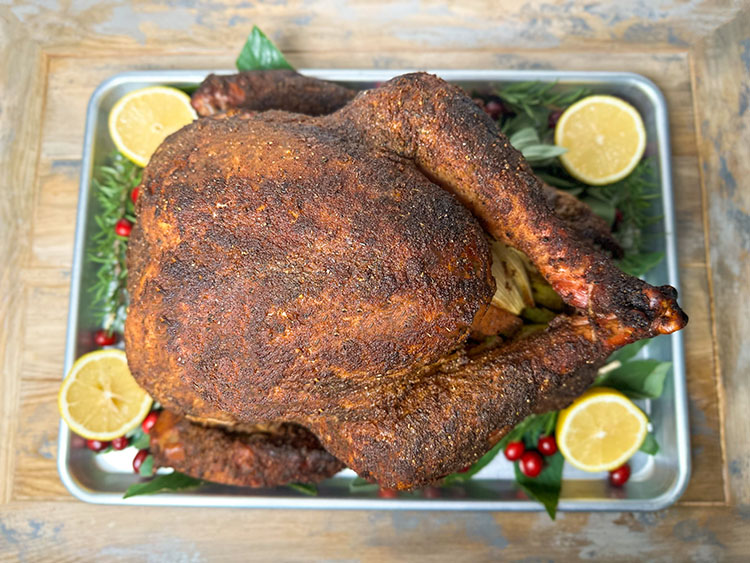
While you cannot deny that a whole smoked turkey makes a great Thanksgiving centerpiece, it is also the reason many birds cook unevenly. The breast cooks faster and dries out while you wait for the dark meat to catch up, and you end up fighting a losing battle against timing.
Spatchcocking fixes most of that in one move. A flattened turkey cooks faster and more evenly. The skin renders better, the rub goes on more evenly, you get fuller smoke coverage, and it takes up less space in the smoker.
Fix it: Remove the backbone with poultry shears, flip the turkey, and press it flat. If you want it perfectly even and easy to carve into halves, take out the keel bone as well.
17. Buying One Huge Turkey Instead Of Two Smaller Birds
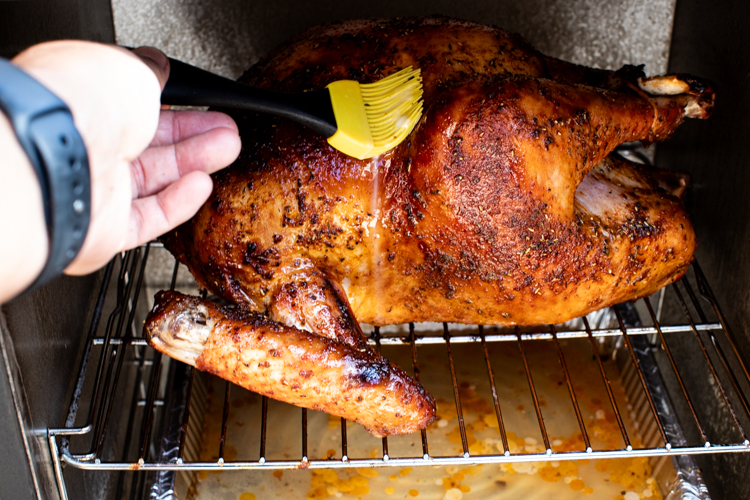
Bigger looks impressive, but giant birds are one of the fastest ways to dry breast meat out. Anything over about 15 lb is more likely to cook unevenly. By the time the thickest parts are safe, the outer breast is overdone.
A larger bird will also extend your cook time, requiring extra planning to avoid hungry guests once lunchtime comes around.
Fix it: Stick with 8 to 12 lb turkeys for smoking. When feeding a crowd, you’re better off buying two smaller birds instead of one monster. They cook faster, brine more easily, and fit better on most smokers.
16. Not Leaving Yourself Enough Time to Defrost
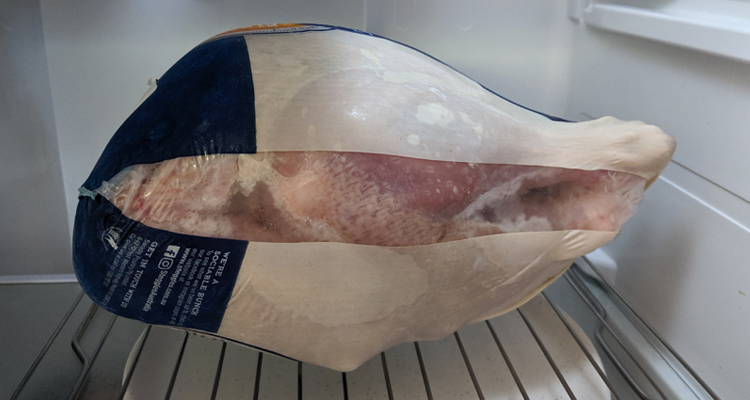
Buying a frozen turkey is fine. Trying to cook a turkey that is still half frozen is not.
A partially frozen bird is hard to spatchcock, hard to brine evenly, and unsafe to smoke. The outside warms too quickly while the center is still solid, which keeps the meat in the danger zone for too long. And do not even think about using the microwave unless you want a disaster.
Fix it: Plan on about 24 hours of fridge time for every 4 to 5 lb of turkey. If you are behind schedule, use a cold water bath and change the water every 30 minutes. Never use warm water.
15. Rushing The Brine Or Using Warm Brine
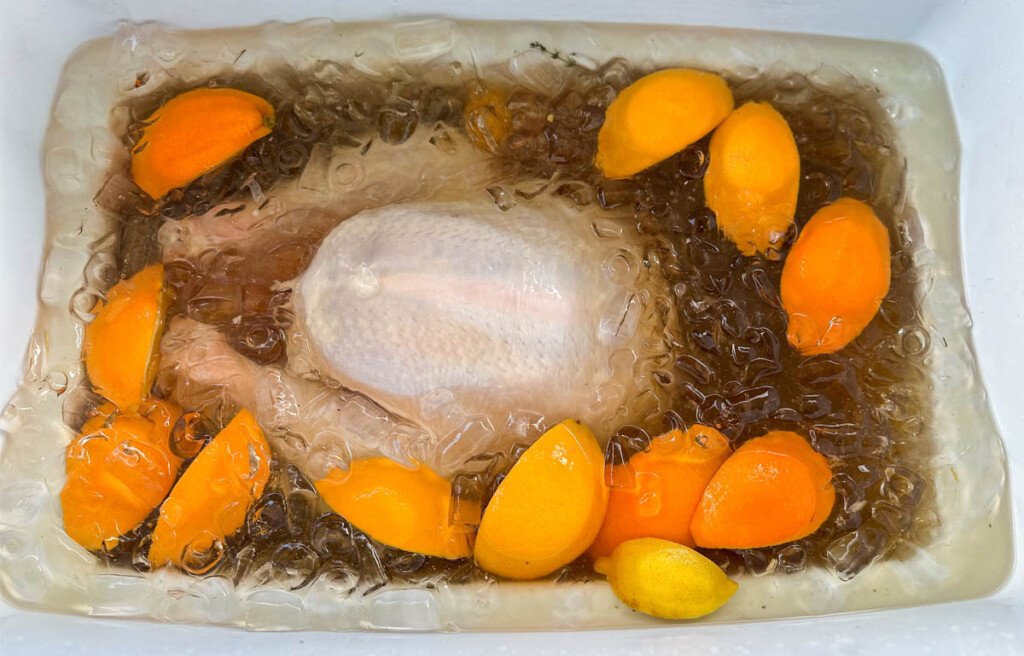
Brining is one of the biggest upgrades you can make, and it is also where a lot of people cut corners.
You need to dissolve the salt and sugar in hot water first, which means bringing a pot of water to a boil. The mistake is mixing that concentrate with only a little cold water, then dropping the turkey in while the brine is still warm. Warm brine gives the outer meat a strange texture and holds the turkey in the danger zone for too long.
Fix it: Use a good turkey brine recipe that mixes ice or cold water before the turkey goes in. Do not stress about brining pre-brined or enhanced birds. You can still brine them, just keep it to a normal overnight soak instead of a multi day brine.
14. Not Having a Proper Brining Container Ready
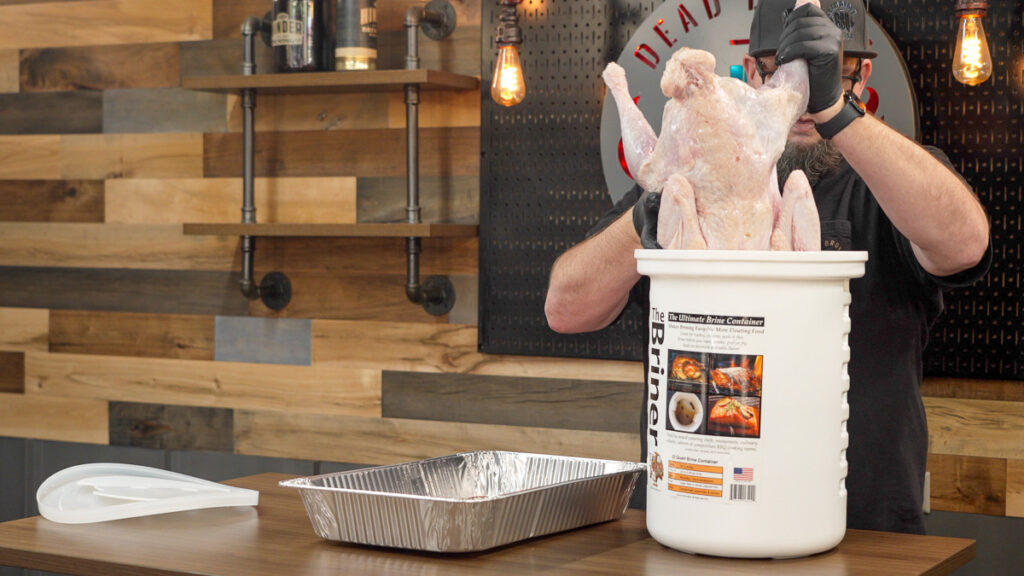
You bring the turkey home, unwrap it, and only then realize you have nothing that actually fits it.
So you grab whatever container is nearby. It is too small, not food safe, hard to keep cold, or it lets the turkey float so half the bird sits above the brine. That leads to uneven seasoning, temperature problems, or skipping the brine altogether.
Fix it: Sort out your brining container before you buy the turkey. A food safe bucket, a large pot, or a brine bag inside a cooler with ice all work. Whatever you use, make sure the turkey stays completely covered and cold the entire time.
If you want something purpose built, The Briner is a 22 quart bucket with an internal plate to keep the bird fully submerged so nothing floats.
13. Not Using Enough Seasoning
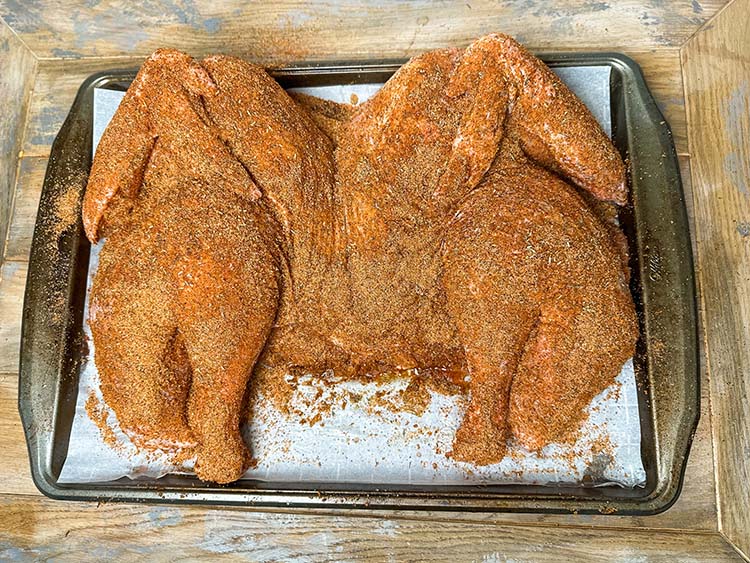
Turkey is mild, and it needs more seasoning than people think. A light dusting looks neat, but it barely makes it through the skin.
This gets even worse if the bird is whole, since the rub struggles to reach every surface.
Fix it: Apply a generous, even coat of rub over the entire bird, including under the wings and into all the joints. If you spatchcock the turkey, seasoning becomes easier and more even because the whole surface is exposed. For a reliable option, use our smoked turkey rub recipe.
12. Not Seasoning Under the Skin
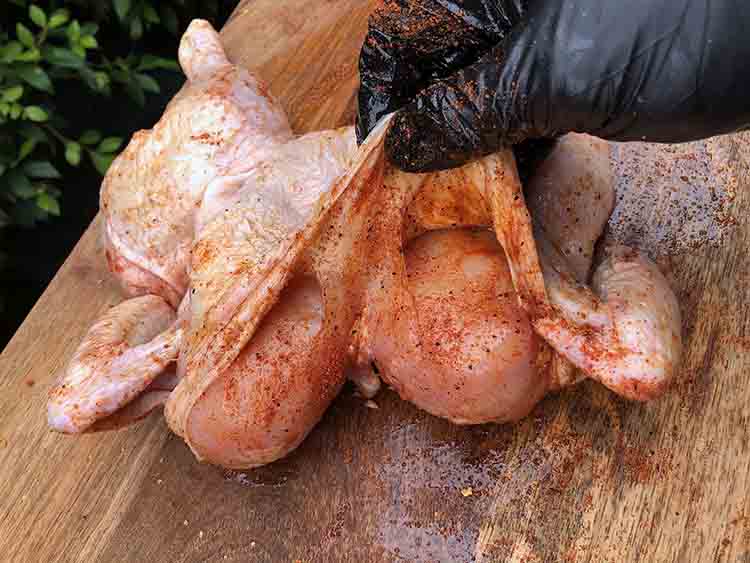
This is a chicken but the same method works for turkey too.
If you only season the outside of your turkey then almost none of that flavor reaches the breast meat. Turkey skin blocks rub the same way a jacket blocks rain. The outside tastes good, the inside tastes plain, and people blame the rub instead of the technique.
Gently loosening the skin takes less than a minute and makes a big difference in flavor all the way through the breast.
Fix it: Slide your hand under the skin on each side of the breast and loosen it without tearing it. Add a light layer of rub or seasoned butter directly onto the meat, then season the outside as normal. If you spatchcock the turkey, this is even easier because the skin lifts away more cleanly.
11. Using Smoke That Is Too Heavy For Turkey
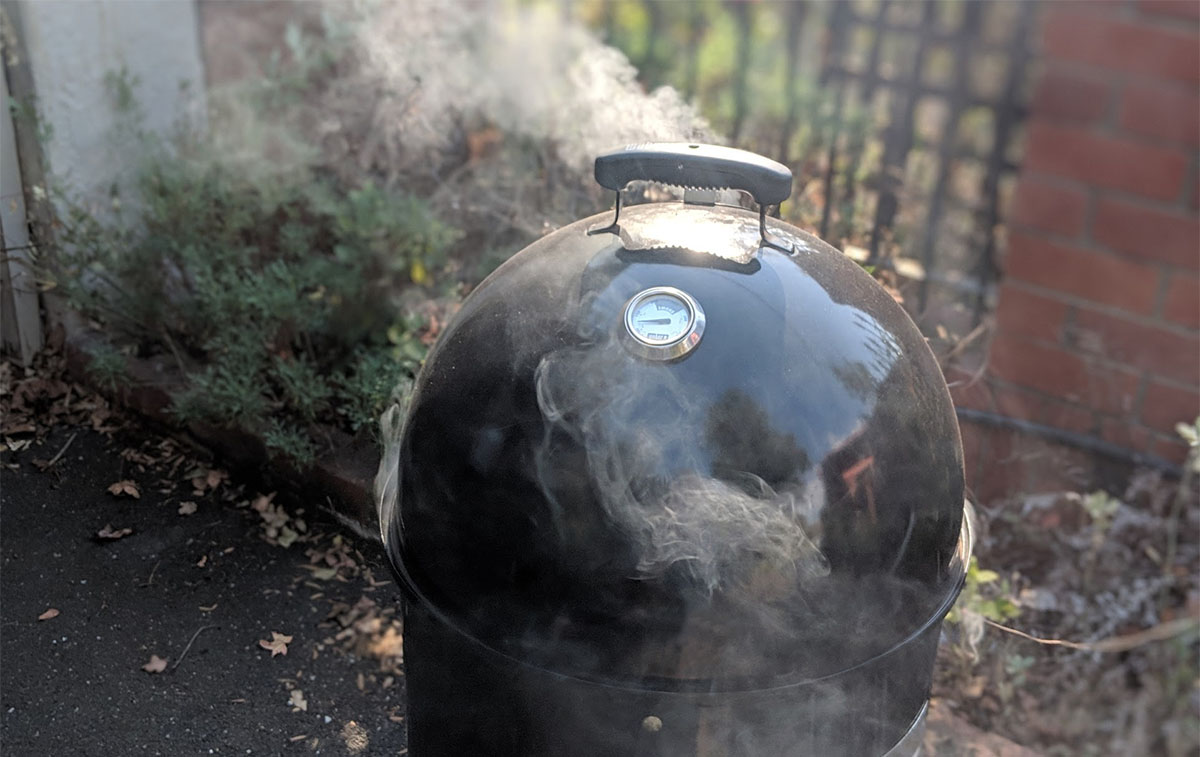
Strong smoke woods like heavy hickory or mesquite can overpower turkey. They darken the skin fast and leave a bitter flavor.
Fix it: Use medium or mild smoke woods such as pecan, maple, alder, or fruit woods. Pellet grills with oak or light hickory blends make great birds at 275°F.
10. Forgetting To Protect Wings And Thin Edges
Wing tips and thin edges burn long before the breast is ready, especially at hotter smoker temps.
Fix it: Once the wings and tips hit a nice color, wrap them loosely in foil. Check thin edges if you raise the temperature.
09. Putting The Wrong Stuff In The Drip Pan (Or Skipping It)
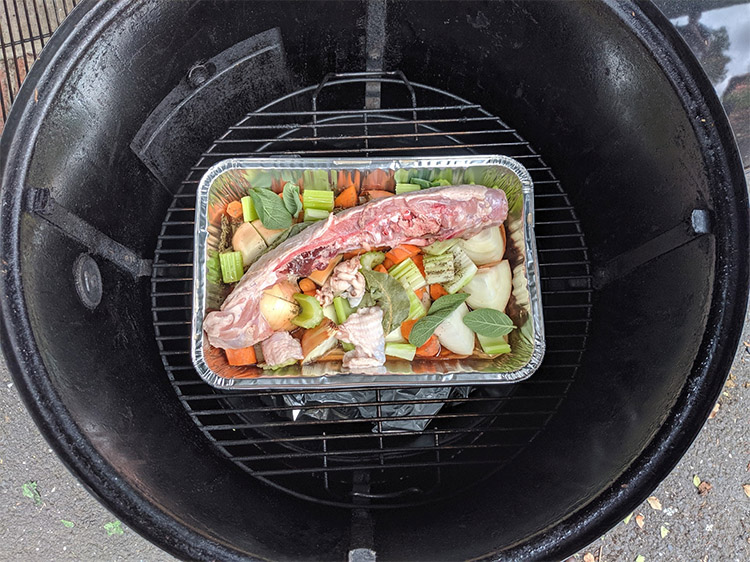
Skipping a drip pan wastes great drippings and makes a greasy mess in your smoker, especially if you injected your turkey. Using just water does not add much flavor.
Fix it: Place a drip pan under the turkey and add onions, carrots, celery, herbs, and stock. Bonus if you spatchcock your turkey, add the backbone for incredible flavor. You get clean grates and better gravy.
08. Stuffing The Turkey Like An Oven Roast
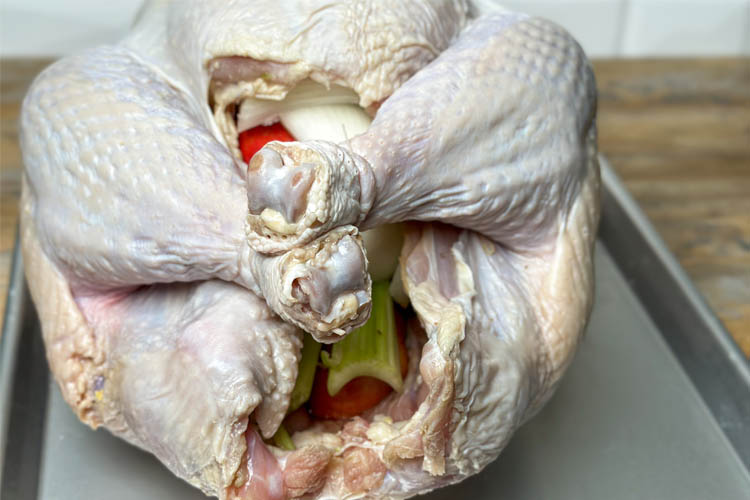
Stuffing a turkey that you’re going to smoke causes more problems than it solves.
The dense filling blocks heat from reaching the center of the bird, so the breast overcooks while the stuffing slowly climbs toward a safe temperature. By the time the middle is hot enough to eat, the outer meat is already losing moisture. On top of that, stuffing acts like an insulating plug that slows airflow and stretches your cook time far longer than necessary.
There is also a food safety risk. Smoked turkey cooks at lower temperatures than an oven, and the stuffing sits squarely in the danger zone until the very end.
Fix it: Smoke the turkey unstuffed and make your stuffing in the oven or in a pan on the side and use turkey drippings for richer flavor. If you want something with more punch, make our smoked sausage stuffing.
07. Trusting Pop-Up Timers And Lid Thermometers
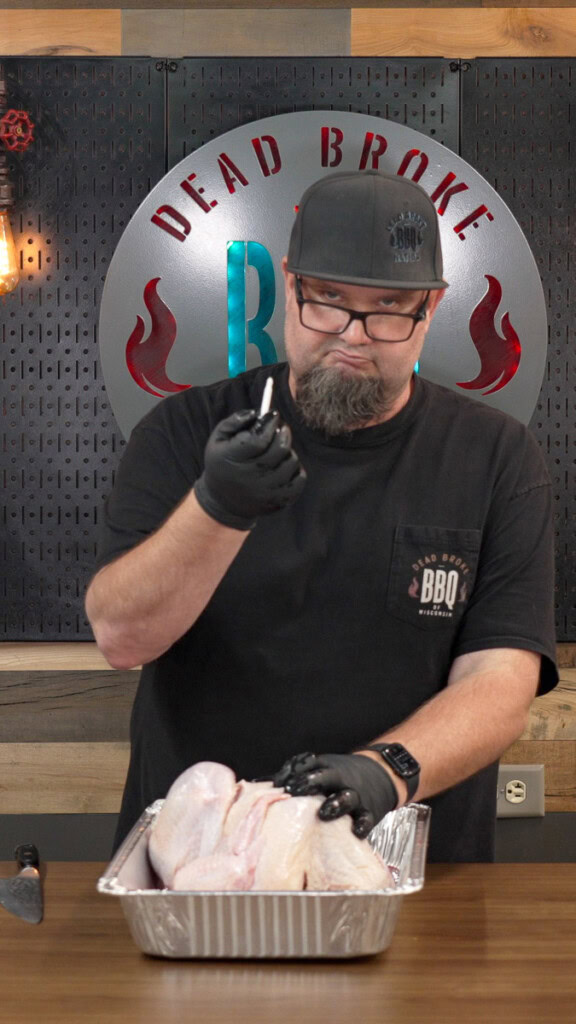
Pop up timers are unreliable. Built in lid thermometers are often 30 to 45°F off. The combination leads to uneven, sometimes unsafe results.
Fix it: Use a good digital thermometer. Run one probe in the thickest part of the breast and track smoker temp at grate level.
06. Picking The Wrong Target Temperature
For years, people were told to cook turkey breast to 180°F. It was not until 2006 that the USDA dropped that guideline. So if your grandma’s turkey was always dry, you can blame them, not her.
Fix it: Follow the current 165°F guideline in the deepest part of the breast, but account for carryover cooking. Pulling at 155°F usually lands you right in the safe, juicy zone.
05. Using The Weather As An Excuse For Bad Cook Times
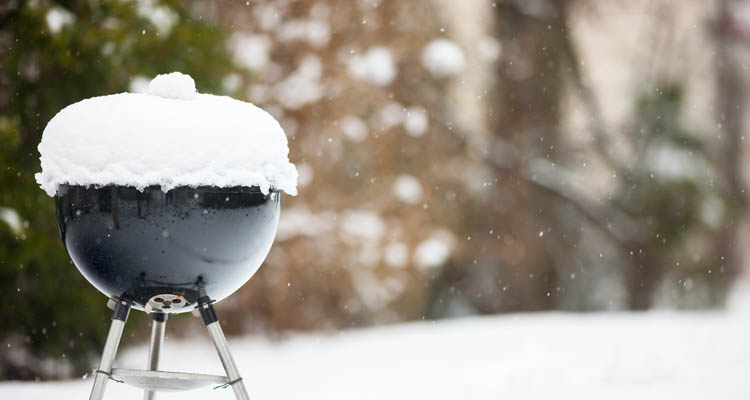
Cold, wind, and rain absolutely change how your smoker behaves, but none of them are surprises.
The mistake is acting like the weather ruined the cook when the real issue was not planning for it. Wind strips heat from the smoker, cold air slows recovery, and sudden gusts can swing temps enough to stretch your cook by hours.
Fix it: Put the smoker somewhere out of the wind, keep extra fuel on hand, and plan for a longer cook when the temperature drops. Aim for steady heat, not perfection. A consistent 275 to 300°F beats chasing every small swing on a windy day.
04. Panicking About Pink Turkey Meat
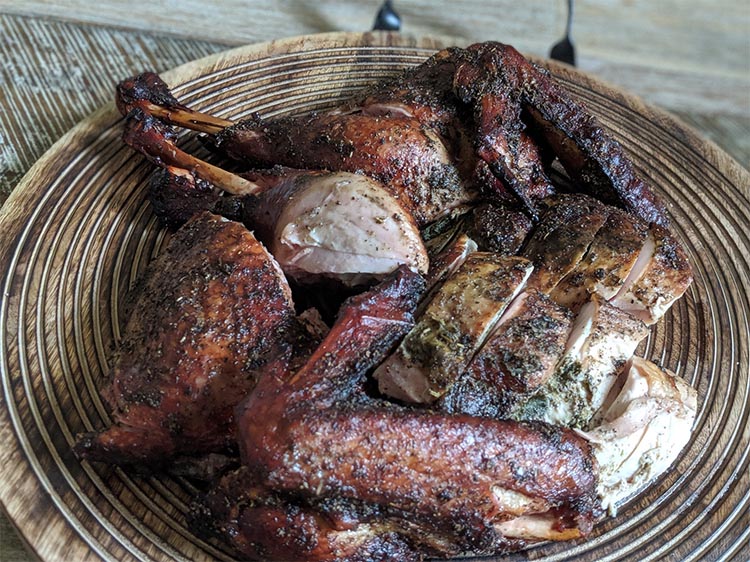
Smoked turkey often retains its pink color near the bone, and clean smoke can impart a rosy tint to the meat.
That color comes from myoglobin, the same protein that gives all poultry and meat its natural pigment. Smoke and low cooking temperatures prevent myoglobin from turning gray, so the meat remains pink even when fully cooked. It is not blood, and it is not dangerous.
The real mistake is overcooking the turkey longer, trying to make the color disappear.
Fix it: Judge doneness by temperature, not color. Smoked turkey can stay pink even when fully safe at 165°F.
03. Resting Under Tight Foil And Steaming The Skin
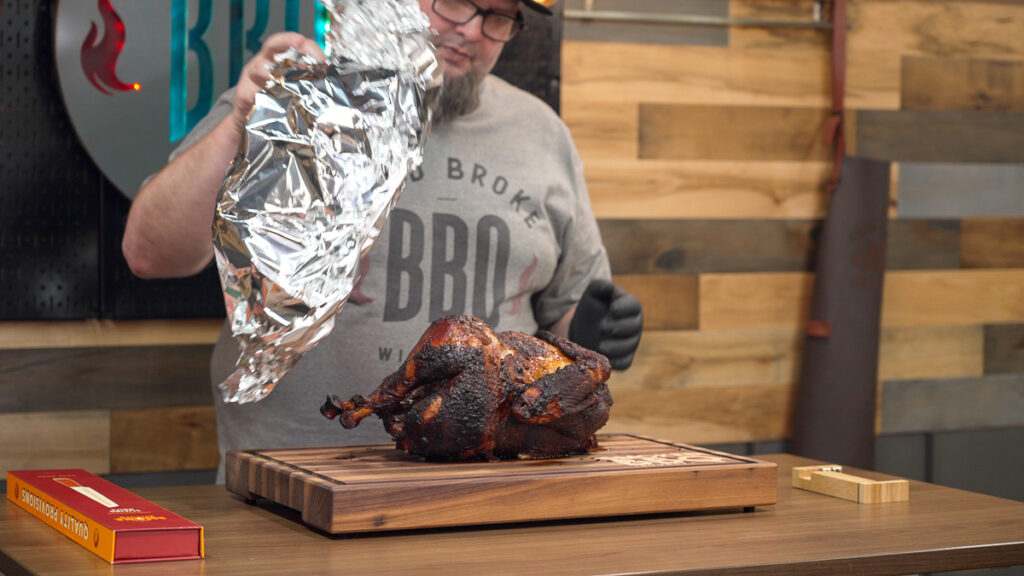
Tightly wrapped foil traps steam and ruins the skin you worked hard to render.
Fix it: Rest the turkey uncovered or under a loose foil tent for 10 to 20 minutes so steam escapes and skin stays in good condition.
02. Getting Sloppy With Food Safety

Holiday chaos leads to cross contamination, unsafe handling, and long stretches in the danger zone. Raw turkey on the wrong board, shared knives, or letting the bird warm up for too long can all cause problems fast.
Fix it: Do not rinse raw turkey. Keep raw and cooked tools separate. Wash hands and surfaces. Move the turkey through the 40 to 140°F zone as efficiently as possible.
01. Making Thanksgiving Your First Practice Run
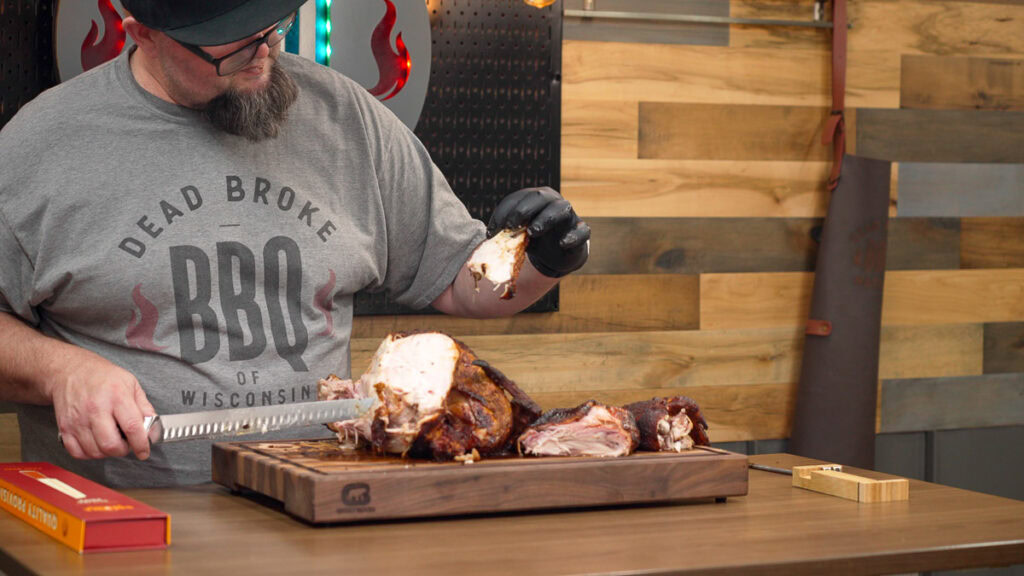
Trying a new method, brine, rub, or smoker on the biggest cooking day of the year is asking for stress.
If you have never spatchcocked a turkey or brined one, the holiday crowd is the worst time to learn. You do not want your first attempt to be the one everyone is waiting on.
Fix it: Do a trial run a week or two before the holiday using the same method you plan to use on Thanksgiving. The leftovers make great sandwiches, soups, or smoked turkey salads, so nothing goes to waste.
Your Path To Turkey Success
That is it, the mistakes that quietly ruin smoked turkey and the fixes that keep it juicy, flavorful, and safe to eat. If you have been bitten by one of these mistakes before, tell us in the comments what went wrong and what you are changing this year.
For more step-by-step help, check out our smoked spatchcock turkey recipe, turkey brine, or turkey injection recipe.
Did you miss our previous article...
https://manstuffnews.com/backyard-grilling/collard-greens-and-sausage
 Backyard GrillingWeekend WarriorsAdvice from DadBeard GroomingTV Shows for Guys4x4 Off-Road CarsMens FashionSports NewsAncient Archeology World NewsPrivacy PolicyTerms And Conditions
Backyard GrillingWeekend WarriorsAdvice from DadBeard GroomingTV Shows for Guys4x4 Off-Road CarsMens FashionSports NewsAncient Archeology World NewsPrivacy PolicyTerms And Conditions
